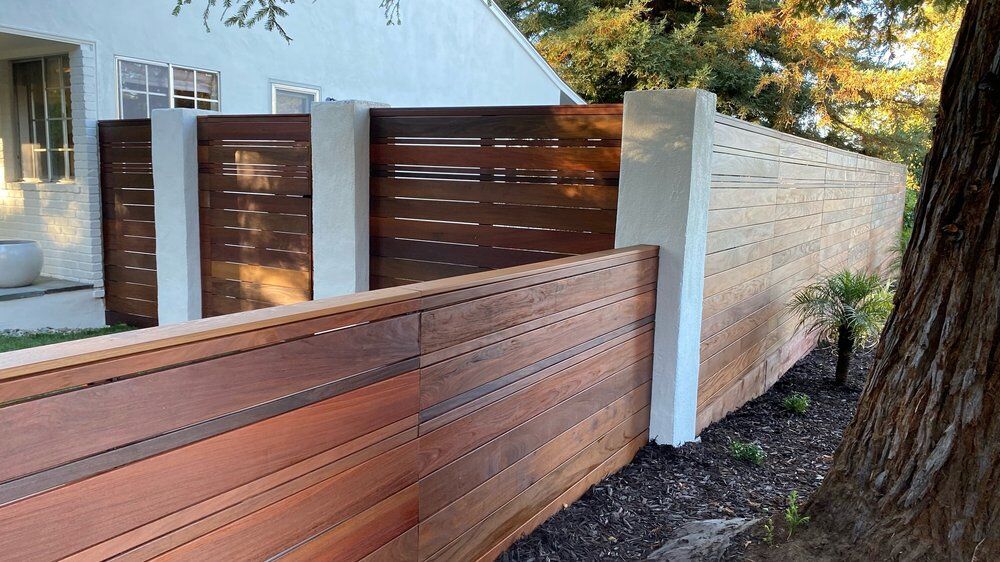All Categories
Featured

As sustainability comes to be a concern for businesses and house owners alike, the demand for green products, including fence products, has increased. Typical fencing alternatives such as metal, plastic, and timber can have negative ecological effects, yet there are now numerous eco-conscious alternatives to think about. Selecting environmentally friendly fence products not only helps in reducing your carbon impact but also contributes to a much more natural and lasting environment.
- Bamboo Secure fencing. Bamboo is one of the most environment-friendly fencing alternatives available. Unlike traditional hardwoods, bamboo can be collected in a few years and grows back rapidly, making it a lasting choice for secure fencing.
Perks: Bamboo is fast-growing, light-weight, and lasting. It needs less plant foods and pesticides compared to various other plants, making it a low-maintenance choice. Factors to consider: While bamboo is long lasting, it may need regular upkeep to secure it from weathering and all-natural wear. It can likewise be susceptible to breaking in colder climates. 2. Recycled Products. Fencings made from recycled products are coming to be significantly preferred as a green choice. These fences are made from post-consumer plastic, recovered timber, and various other recycled materials, maintaining waste out of land fills. Making use of recycled materials minimizes the demand for brand-new raw resources, minimizing environmental destruction.

Perks: These fencings help lower waste and preserve all-natural resources. They are likewise commonly low-maintenance and long-lasting. Factors to consider: While recycled fencings can be sturdy, the visual appeals might not always match traditional secure fencing options. Nonetheless, several styles are now available that resemble the look of wood or rock. 3. Compound Fencing. Compound fence is made from a mixture of recycled wood fibers and plastic, using the appearance of wood without the ecological effect. Several composite fencings are made from recycled material, additional boosting their environment-friendly condition. These fences are lasting, require minimal upkeep, and do not require to be treated with hazardous chemicals like typical timber fences.
Conveniences: Compound fencings are sturdy, immune to rot, and require little upkeep. They likewise supply a similar visual to wood without logging worries. Factors to consider: While they are low-maintenance, composite fencings may be more expensive than standard timber or vinyl choices. The production process can likewise be energy-intensive. 4. Cedar and Redwood Fencing. Cedar and redwood are natural timber materials that are usually thought about more environment-friendly compared to other woods. These kinds of wood are normally immune to decay, bugs, and dampness, which minimizes the need for chemical therapies. Furthermore, these trees are grown in lasting forests, making certain that they are harvested properly.
Benefits: Cedar and redwood are both normally attractive and resilient materials. They provide natural resistance to insects and rot, which helps minimize the need for chemical treatments. Considerations: These woods can be a lot more costly than other alternatives. They likewise require periodic maintenance, such as sealing or staining, to make certain long life. 5. Living Fencings (Hedges and Hedges) Living fences, made from hedges, trees, or bushes, are a green alternative that likewise gives natural privacy and aesthetic charm. Plants such as privet, boxwood, bamboo, and arborvitae are typically utilized for creating thick, eco-friendly fencings. These living obstacles assist with noise reduction, improve air high quality, and offer habitat for neighborhood wildlife.
Benefits: Living fencings advertise biodiversity, enhance air high quality, and enhance the visual allure of your residential property. They additionally take in carbon dioxide and add to a greener atmosphere. Factors to consider: Living fences call for upkeep, such as trimming and watering, to guarantee they expand properly. They might not provide the very same level of safety as standard secure fencing products. 6. Stone and Reclaimed Brick Fence. Rock and recovered block fencings are one more eco-friendly option. These materials are sturdy, call for minimal maintenance, and have a long life expectancy. When recovered from old buildings or structures, they help in reducing the need for new products and stop waste from entering land fills.
Advantages: Stone and block are sturdy, weather-resistant, and supply a timeless, timeless aesthetic. Redeemed products likewise have a minimal ecological footprint. Factors to consider: The installment of rock and brick fencings can be labor-intensive, and the materials may be much more expensive than other alternatives. Nonetheless, the lasting sturdiness and reduced maintenance costs can make them a rewarding investment. Verdict. Choosing a green fencing material is a wise way to minimize your ecological influence while enhancing your property's privacy and aesthetic appeal. Bamboo, recycled materials, composite secure fencing, and living fencings all provide lasting alternatives that reduce waste, conserve sources, and advertise a greener lifestyle.
By picking one of these green fence choices, you add to the security of the setting while creating a lovely, useful exterior area. The best material will certainly rely on your choices, climate, and the level of maintenance you want to provide, yet felt confident that there are countless eco-conscious selections that align with your lasting lifestyle.
Latest Posts
Take Advantage of Special Auto Repair Offers in Chicago at Montclare Auto Repair
Published en
1 min read
Secure and Improve Your Home with Weathercraft's Exterior siding Solutions
Published en
1 min read
Explore Budget-Friendly Auto Repairs with Montclare’s Monthly Service Specials
Published en
1 min read
More
Latest Posts
Take Advantage of Special Auto Repair Offers in Chicago at Montclare Auto Repair
Published May 28, 25
1 min read
Secure and Improve Your Home with Weathercraft's Exterior siding Solutions
Published May 25, 25
1 min read
Explore Budget-Friendly Auto Repairs with Montclare’s Monthly Service Specials
Published May 24, 25
1 min read